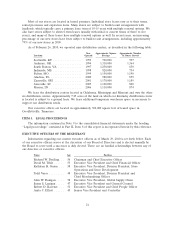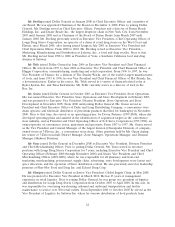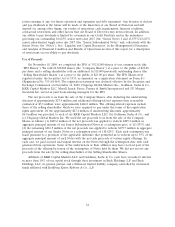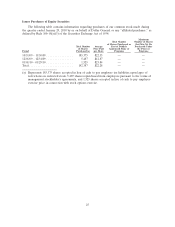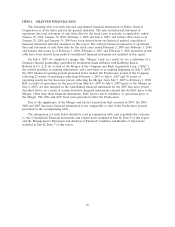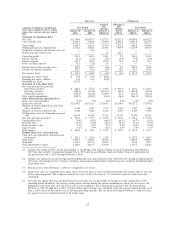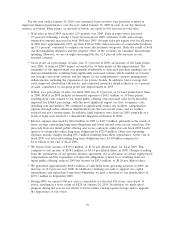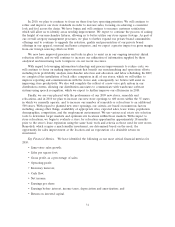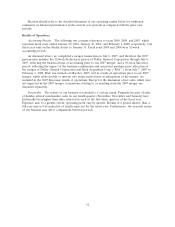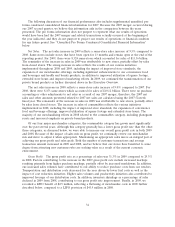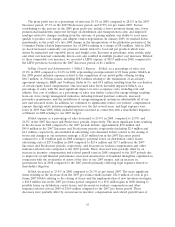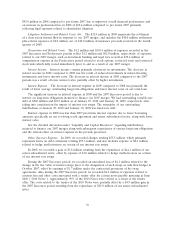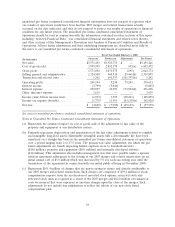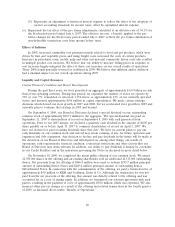Dollar General 2009 Annual Report Download - page 42
Download and view the complete annual report
Please find page 42 of the 2009 Dollar General annual report below. You can navigate through the pages in the report by either clicking on the pages listed below, or by using the keyword search tool below to find specific information within the annual report.In 2010, we plan to continue to focus on these four key operating priorities. We will continue to
refine and improve our store standards in order to increase sales, focusing on achieving a consistent
look and feel across the chain. We have begun and will continue to measure customer satisfaction
which will allow us to identify areas needing improvement. We expect to continue the process of raising
the height of our merchandise fixtures, allowing us to better utilize our store square footage. As part of
our overall category management processes, we plan to further expand our private brand consumables
offerings and to continue to upgrade the selection, quality and presentation of our private brand
offerings in our apparel, seasonal and home categories, and we expect a greater impact on gross margin
from our foreign sourcing efforts in 2010.
We now have improved processes and tools in place to assist us in our ongoing inventory shrink
reduction efforts, and we will continue to increase our utilization of information supplied by these
analytical and monitoring tools to improve on our recent successes.
With regard to leveraging information technology and process improvements to reduce costs, we
will continue to focus on making improvements that benefit our merchandising and operations efforts,
including item profitability analysis, merchandise selection and allocation and labor scheduling. In 2009,
we completed the installation of back office computers in all of our stores, which we will utilize to
improve reporting and communications with the stores and, consequently, we believe will assist in
improving store productivity. We also will complete the rollout of a new voice pick system in our
distribution centers, allowing our distribution associates to communicate with warehouse software
systems using speech recognition, which we expect to further improve our efficiencies in 2010.
Finally, we are very pleased with the performance of our 2009 new stores, remodels and
relocations, and in 2010 we plan to increase our new store openings to 600 stores within the 35 states
in which we currently operate, and to increase our number of remodels or relocations to an additional
500 stores. With regard to planned new store openings, our criteria are based on numerous factors
including, among other things, availability of appropriate sites, expected sales, lease terms, population
demographics, competition, and the employment environment. We use various real estate site selection
tools to determine target markets and optimum site locations within those markets. With respect to
store relocations, we begin to evaluate a store for relocation opportunities approximately 18 months
prior to the store’s lease expiration using the same basic tools and criteria as those used for new stores.
Remodels, which require a much smaller investment, are determined based on the need, the
opportunity for sales improvement at the location and an expectation of a desirable return on
investment.
Key Financial Metrics. We have identified the following as our most critical financial metrics for
2010:
• Same-store sales growth;
• Sales per square foot;
• Gross profit, as a percentage of sales;
• Operating profit;
• Inventory turnover;
• Cash flow;
• Net income;
• Earnings per share;
• Earnings before interest, income taxes, depreciation and amortization; and
• Return on invested capital.
31


